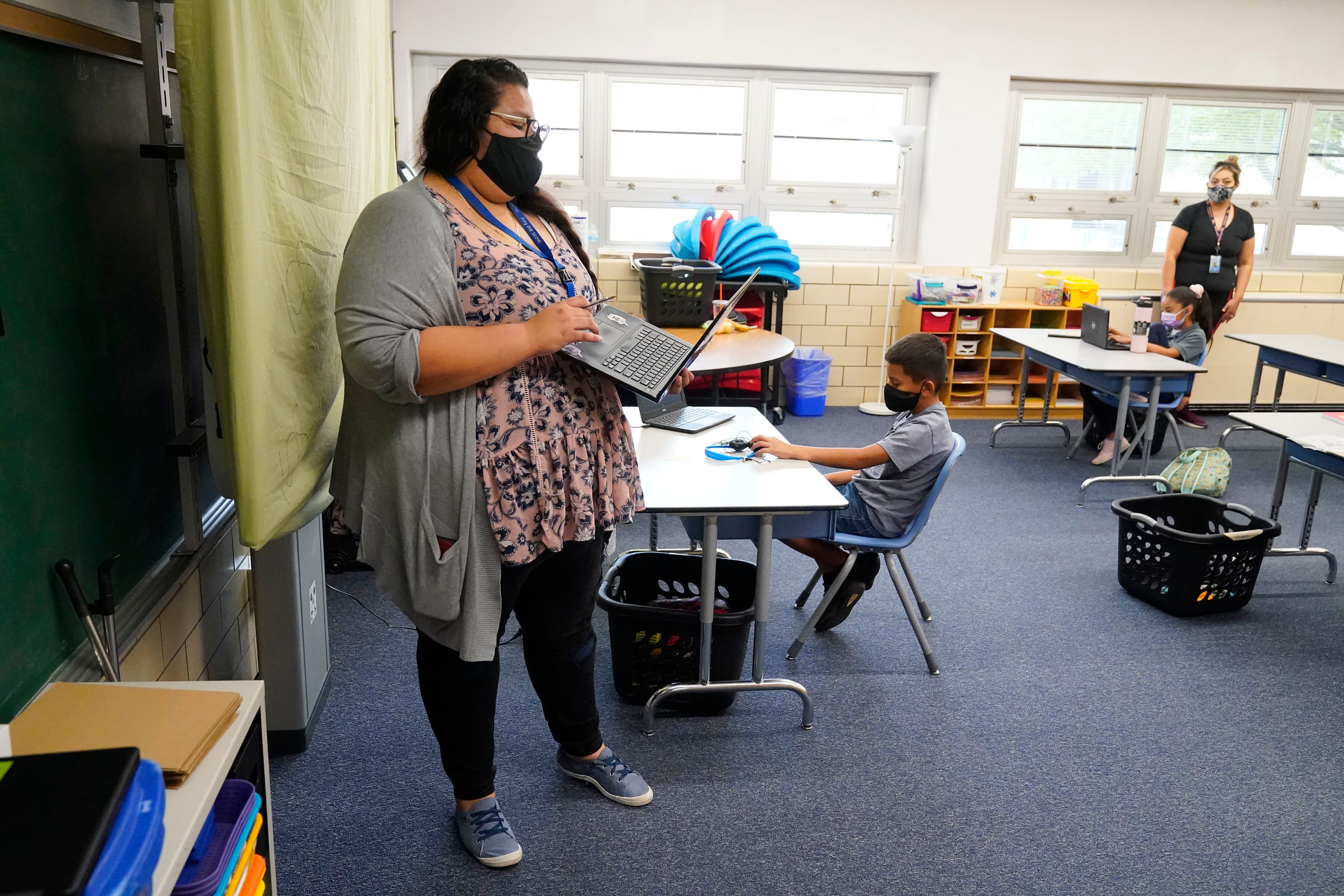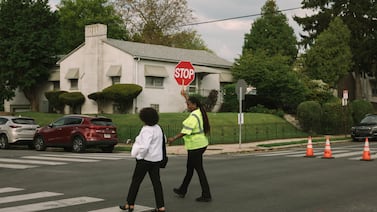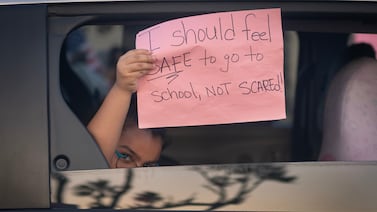New Colorado state guidance could mean fewer teachers have to quarantine at home after a positive case of COVID-19 at their school, allowing more classrooms to stay open.
The guidance, released Wednesday, comes after district superintendents advocated for increased flexibility on who to send home when students or staff members test positive. The new rules allow schools in all counties to enact targeted quarantines of a sick person’s close contacts rather than quarantining that person’s entire class or cohort.
Previously, the guidelines required whole classes or cohorts to quarantine in counties with high levels of COVID transmission. That sometimes resulted in leaving too few adults to operate schools, which necessitated a switch to remote learning.
Twenty-two of Colorado’s 30 largest school districts plan to offer only virtual instruction between Thanksgiving and Christmas, according to a Chalkbeat analysis. In shifting to online learning, many superintendents cited staffing shortages due to high numbers of teachers in quarantine.
Gov. Jared Polis has repeatedly said he’d like to see schools remain open for in-person learning, a decision that’s left up to individual districts in Colorado. On Wednesday, he said the new quarantine guidelines, which he noted are “nearly identical to protocols that worked in August and September,” are a good way to maximize in-person learning.
Virus levels in Colorado are much higher now than in August and September. For example, on Aug. 20, state statistics show a seven-day average of 3% of COVID tests coming back positive. By Nov. 20, the seven-day average had skyrocketed to 12%.
A new 15-member “back-to-school working group” established by Polis met for the first time Wednesday. Its aim is to help districts offer as much uninterrupted in-person learning as possible in the second semester. Members include two superintendents, two public health officials, a teacher, a paraprofessional, a nurse, two parents, and others. (See full list below.)
Polis called the first meeting “very productive.”
“The classroom is one of the safest places,” he said. “We want to do all we can in that controlled environment to not have an additional semester as chaotic as this one.”
Many districts and classrooms have switched from remote learning to in-person learning and back again as virus conditions shift or students and staff are quarantined.
The new guidelines will likely mean fewer quarantine-related disruptions to in-person learning. If schools are taking certain precautions, such as following seating charts, screening for symptoms, and requiring masks, they can practice targeted quarantining.
Under targeted quarantine, only people who were within 6 feet of a sick person for 15 minutes or more while wearing masks, or within 12 feet unmasked, must quarantine at home.
In line with guidance from the federal Centers for Disease Control and Prevention, the 15 minutes is cumulative. For example, two 10-minute exposures would count as 20 minutes of exposure.
If schools cannot follow all of the precautions, the guidelines call for more widespread quarantining, including of anyone who was in a room with a sick person for 40 minutes or more. For instance, the guidelines note that it’s not developmentally appropriate for young children to stay in their seats all day, and they may struggle more with mask wearing.
“This may increase the number of contacts associated with a case in younger grade levels,” the guidance says, meaning that more students would have to quarantine.
The members of the governor’s back-to-school working group are:
Deirdre Pilch, superintendent of the Greeley-Evans School District
Leslie Nichols, superintendent of the Gunnison Watershed School District
Amie Baca-Oehlert, president of the Colorado Education Association
Rebecca Holmes, president and CEO of Colorado Education Initiative
Lisa Larson, Boulder Valley School District paraprofessional
Dee Leyba, La Junta school board member
Rebecca McClellan, State Board of Education member
Catie Santos de la Rosa, Aurora Public Schools educator
Crystal Jennings, Colorado Springs parent
Dan Gehrke, executive director of Lutheran High School in Parker
Mike Miles, CEO of Third Future Schools charter network
Rachel Kaygi, parent and board member of Healthier Colorado
Kelly Grenham, Mapleton Public Schools nurse
Heath Harmon, director of Eagle County Public Health
Tom Gonzales, director of Larimer County Public Health
Correction: A previous version of this story misspelled Dan Gehrke’s last name.






